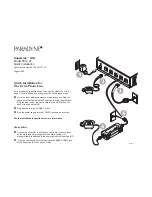
INTRODUCTION
Page 1 - 7
In order to implement FDSE, we must define three key
components: the operation of the MAC layer entity, the operation
of the MAU, or transceiver, and the operation of an Auto-Detection
mechanism (for Auto-Detect of FDSE).
The most important, and fundamental requirement for FDSE is
that FDSE technology be backward-compatible with standard
802.3 Ethernet technology.
1.4.2
MAC Layer
The Full Duplex Switched Ethernet MAC layer allows for the
simultaneous reception and transmission of 802.3 Ethernet frames.
The entire MAC layer provides separate processing paths for the
transmitter and receiver, including separate CRC generation and
checking. The decision to operate in full-duplex mode will be
made by the FDSE Auto-Detect mechanism.
1.4.3
MAU Operation
The MAU, or transceiver, will signal the MAC layer that FDSE
mode of operation is desired when either of two events occurs: a
“Hardware” register is set on the MAU, or an FDSE Auto-Detect
mechanism indicates that FDSE operation is desired, and switches
hardware to FDSE mode.
When the MAU detects that FDSE operation is desired, it will do
three things: disable the standard Ethernet Collision detector and
the collision LED, disable the loopback signal, and disable the SQE
signal.
These changes are required for the following reasons: collision is
impossible within FDSE, and future AUI transceivers will have
support for FDSE.
















































